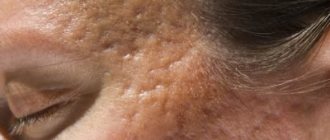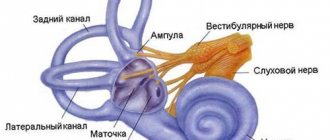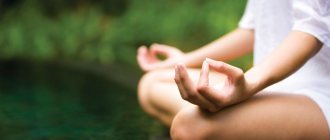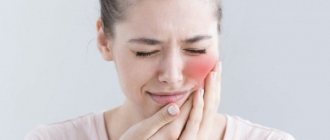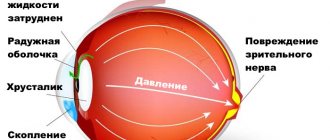Vegetative-vascular dystonia is a common diagnosis that is given to many people with various symptoms. Common symptoms include high blood pressure, slow heart rate, dizziness and migraines.
Some people experience extrasystoles during VSD , and this symptom often frightens patients. In this case, the heart begins to pound quickly or, on the contrary, freeze. Naturally, any person will be concerned about such negative changes in the body.
If they occur, you should definitely consult a specialist about your condition. You should not wait until your health worsens significantly, because it is important to take action immediately.
Characteristics of the disease
Vegetative-vascular dystonia is diagnosed in patients if alarming symptoms are observed, but there are no negative changes in the organs themselves. Problems with the autonomic system occur in many people, so this phenomenon is considered common.
The disease can occur for various reasons, while some negative factors provoke its exacerbation. A person should know in what cases one may encounter VSD in order to avoid provoking factors if possible.
Main reasons:
Constant nervous tension. Some people worry too much and often experience emotional turmoil. With this lifestyle, you can quite often encounter the occurrence of vegetative-vascular dystonia. That is why it is important to lead a calm lifestyle, and then your health will be much better.
- Hormonal changes. It occurs in adolescence, during pregnancy and breastfeeding. Due to various failures and sudden changes, a person may experience disorders of the autonomic system.
- Chronic diseases. If a person has various diseases, then symptoms of VSD may appear due to them. It’s even worse if the patient does not treat existing ailments, because in such a situation they will progress, worsen and significantly deplete the body.
- Heredity. If parents have vegetative-vascular dystonia, then the child is likely to encounter it. In such a situation, it is important to prevent the disease in order to maintain the body in normal condition.
It is important for a person to lead a healthy lifestyle so as not to have to face the negative manifestations of the disease. If you have bad habits, then it will be important to give them up. You should not wait until your health worsens significantly. The right decision would be to start treatment immediately, and then you will be able to return to normal health.
Types of violations
With VSD, there are various negative symptoms that a person has to face. For example, a patient may complain of regular headaches that are difficult to get rid of for a long time. Dizziness often occurs, which is caused by poor blood circulation and insomnia. There may be problems with thermoregulation, because of this a person’s body temperature rises to 37 - 37.5 degrees. Trembling in the limbs, chills, and increased sweating are often observed.
In addition, a person can notice extrasystoles during VSD, and they come in different types.
It is extremely important to understand what the prognosis of the symptom is:
- Safe. This form occurs quite often. Contractions do not signal themselves with pronounced symptoms, and there are no significant clinical changes.
- Potentially unsafe. In this case, deviations occur against the background of existing heart disease. In this case, it passes without pronounced symptoms and practically does not cause harm to a person.
- Malignant. This is one of the most dangerous forms, which poses a threat to the patient’s life. In such a situation, persistent heart rhythm disturbances occur; in almost all cases, this type appears with obvious heart problems.
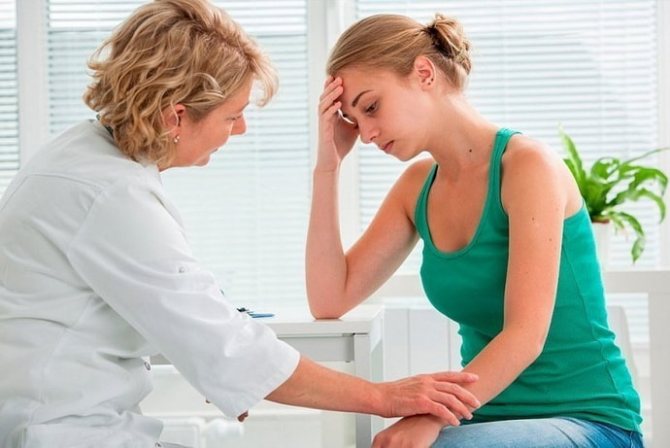
In addition, extrasystoles are divided depending on the reason for which they appeared. For example, functional disorders are defined when a person does not have any disruptions in the functioning of the heart. It is this type that often occurs with vegetative-vascular dystonia. It should be understood that even stress and bad habits, such as smoking and addiction to alcohol, can provoke the occurrence of functional extrasystoles.
Organic disorders appear when a person has serious diseases of the cardiovascular system. The risk group includes people who have had a heart attack in the past. This type of pathology is considered more dangerous and therefore requires careful diagnosis.
Extrasystole with VSD
Extrasystoles occur during VSD as a result of a violation of the autonomic innervation of the heart. At the same time, extraordinary contractions of the heart also provoke worsening of dystonia.
These pathological conditions can be caused by bad habits, infections or toxins.
In a patient, a combination of diseases provokes pain in the heart, weakness, loss of consciousness and ischemia of various organs and tissues, which can be complicated by a heart attack or stroke.
Dystonia occurs when autonomic innervation is disrupted due to various factors.
What is this and what are the normal indicators?
Extrasystoles are a violation of the heartbeat, due to which it can freeze or contract very quickly. In this case, blood circulation in some organs and tissues may suffer as a result of insufficiently efficient pushing of blood through the vascular bed.
Sometimes the cause of extrasystole is a violation of the autonomic innervation of the heart. In the case of a combination of these diseases, a vicious circle is started, because heart rhythm disturbances provoke worsening of dystonia, and VSD contributes to extrasystoles.
Normally, single extraordinary contractions of the entire heart or its individual parts are allowed, which do not cause circulatory disturbances due to a decrease in cardiac output.
Extrasystole during VSD can be provoked by the following factors on the human body:
- smoking;
- consumption of alcoholic beverages;
- poor nutrition;
- contact with toxins;
- prolonged lack of sleep;
- overwork;
- binge eating;
- overheat;
- feverish condition;
- exposure to an infectious agent;
- physical work;
- excess body weight;
- hormonal disbalance.
Types of extrasystole
There are several types of pathology, depending on the place in which the innervation of the heart muscle is increased.
Depending on the location of the excitation of the cardiac muscle, ectopia can be of the following types:
- ventricular;
- atrioventricular;
- atrial;
- combined.
If there is an alternation of extrasystole and normal rhythm, then this condition is called parasystole. And also extraordinary contractions occur early or simultaneously with the T wave on the ECG, mid-formations - after this formation, and late ones occurring before R. Depending on the number of ectopic foci, monotopic and polytopic are distinguished.
Symptoms of extrasystole with dystonia
This pathological condition can cause the development of the following clinical signs in a person:
A manifestation of this pathology in a person may be dizziness.
- anxiety;
- irritability;
- feeling of fear;
- panic attacks;
- shortness of breath and lack of air;
- weakness;
- dizziness;
- loss of consciousness;
- stroke;
- heart attack;
- coma;
- paralysis.
The combination of irregular heartbeats and dystonia leads to frequent episodes of insomnia in the patient. He is anxious, fear of death and panic attacks appear. During physical activity, shortness of breath and a feeling of lack of oxygen are common.
Heaviness and pressing pain appear in the chest. Insufficient oxygen supply to the brain due to low cardiac output leads to dizziness, headaches, loss of consciousness, and over a long period of time it causes cognitive disorders.
How is diagnostics carried out?
Extrasystole against the background of VSD is determined using electrocardiography.
In addition, the patient is shown an ultrasound examination of the heart to identify possible structural anomalies that could lead to impaired contractility of the organ.
The patient is recommended to undergo a general and biochemical blood test. To exclude possible consequences for the brain, it is necessary to conduct magnetic resonance and computed tomography, as well as electroencephalography.
Treatment methods
Mint infusion is good at calming the nervous system.
To get rid of dystonia combined with extrasystole, you need to lead a healthy lifestyle with sufficient physical activity. It is important to exclude overwork and psycho-emotional shocks.
Proper nutrition is necessary without excess fatty, fried, spicy and sweet foods. You need to get rid of bad habits and follow a daily routine. You will also need to consult a neurologist who will prescribe neuroprotective drugs, vitamins and sedatives.
The most commonly used infusions of medicinal herbs are motherwort, mint and lemon balm. Also used are infusions of valerian, chamomile, lavender and peony flowers.
The basis of treatment for these pathologies is the normalization of the daily routine.
In addition, therapeutic breathing exercises and other physical procedures are used that calm the nervous system and improve blood circulation.
For persistent extrasystole, which significantly affects the general condition of the patient, “Novocainamide”, “Cordarone”, “Amiodarone” or “Lidocaine” are used.
If there is no effect from conservative therapy, surgery is performed in the form of radiofrequency ablation or excision of the heterotropic focus of excitation of cardiac impulses.
Source: //VseDavlenie.ru/zabolevania/vegetodistonia/ekstrasistoly-pri-vsd.html
Reasons for appearance
Extrasystole during VSD appears in the presence of provoking factors. They can be caused by various circumstances. For example, significant overwork, neuroses, alcoholism, drug use, abuse of coffee and strong tea. That is why, in order to avoid extrasystole during VSD, you should definitely reconsider your lifestyle.
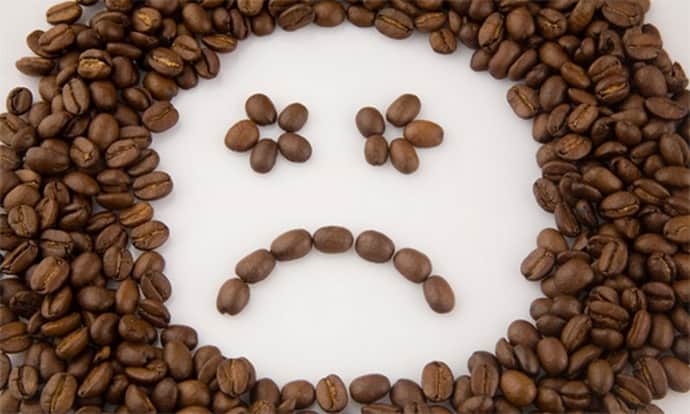
There are other reasons that have nothing to do with psychogenic factors. These include heart disease, osteochondrosis, ischemia, mitral valve prolapse, heart failure, metabolic problems, and cardiosclerosis. It is important to carry out timely prevention of these diseases so that you do not have to suffer from negative consequences later.
It is worth noting that specific moments can intensify the manifestations of the disease. We are talking about fever, allergies, infections, and poisoning. It also happens that extrasystoles occur due to taking medications. For example, due to diuretics, antidepressants and sympatholytics.
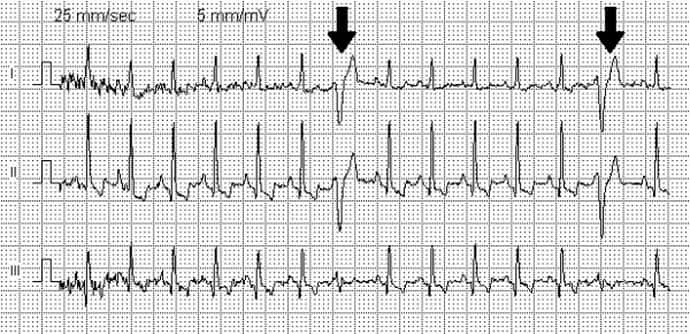
Should we be afraid of such a condition?
Is extrasystole dangerous during VSD?
This question worries those who are faced with this condition. If there are no organic changes, extrasystole will not bring any danger to a person, but it is still the most common form of cardiac arrhythmia. Such problems usually arise both in patients suffering from frequent neuroses due to VSD, and during menstruation in women, as well as people whose activities are associated with constant increased stress.
This type of extrasystole does not require serious therapy, and its symptoms can go away on their own, and can also occur completely unnoticed by the patient. A specialist may prescribe the patient to use sedatives, but modern cardiologists believe that therapy involving the use of antiarrhythmic drugs can have the opposite effect, significantly worsening the patient’s general well-being.
The prognostic and therapeutic picture of the disturbed rhythm of the cardiac system and its sudden shocks is proportional to the characteristics of the concomitant disease. If it is absent or if there are no signs of damage to the contraction of ventricular and myocardial function within normal limits, extrasystole may not be considered as a pathology requiring emergency treatment.
Diagnosis and treatment
If a person feels like their heart is sinking, anxiety is increasing, they are having trouble breathing, and their heart rate is erratic, then it is worth visiting a medical professional. It is extremely important to undergo diagnostic measures to assess the condition of the body. If serious diseases are identified, then their therapy will need to be started.
Directly to make a diagnosis, you need to undergo the following procedures:
- ECG. You can check heart contractions, as well as determine where pathological impulses appear.
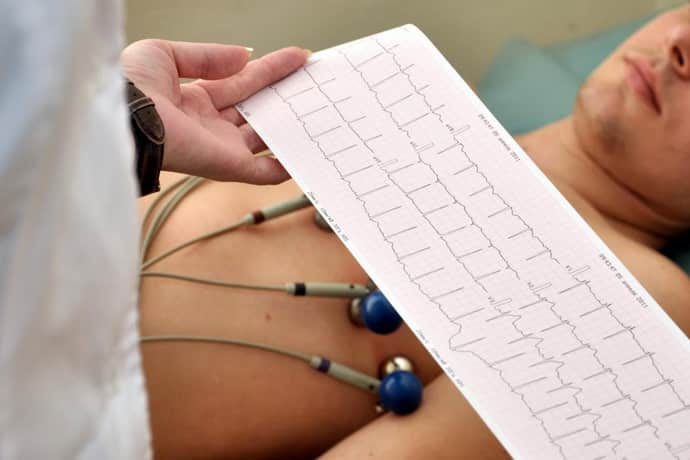
- EchoCG. It helps to determine the effectiveness of all heart chambers, and it is also possible to identify the cause of organ dysfunction.
- Daily ECG recording. With its help, it will be possible to understand exactly when extraordinary contractions occur, as well as determine their relationship with external factors.
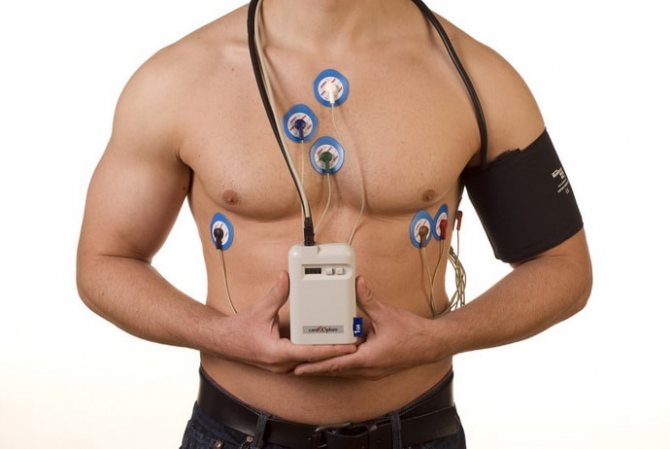
If extrasystole is observed during VSD, then the doctor may prescribe a sedative to the person, for example, St. John's wort, motherwort, valerian. They are safe for the body because they are of natural origin. In some cases, it is necessary to take sedatives, such as Novo-Passiit, Persen and Fitosed. They are good in cases where a person experiences emotional overstrain.
VSD and extrasystoles have a close relationship, and people should be aware of possible complications. First of all, atrial fibrillation, atrial flutter, and paroxysmal tachycardia may occur. Insufficient blood supply may occur, and this can even lead to death. That is why you will need to reconsider your lifestyle, give up bad habits and follow a diet. In this case, it will be possible to maintain normal health.
Is extrasystole dangerous during VSD and how to get rid of it
Human life depends on many organs. If the kidneys, lungs or intestines begin to work poorly, a person will begin to worry, but usually without that quiet panic that any disturbance in the functioning of the heart causes. After all, other organs are not capable of killing a person suddenly, in a matter of seconds.
And their work is not felt as clearly as the heart rate. The heart can scare its owner using the most sophisticated methods: sometimes it beats too quickly, sometimes too slowly, sometimes it starts skipping beats. But the most terrible dance of the heart is always extrasystole.
People with VSD, who often suffer from hypochondria, phobia of death and panic attacks, are especially sensitive to interruptions in heart function. But such patients, for good reasons, are more susceptible to extrasystole than others.
Symptoms of extrasystalia with VSD
Extrasystole (“extra” - extra, “systole” - cardiac contraction) is an extraordinary, “extra” contraction of the heart, the causes of which are not always clear. Such a contraction is usually felt by the patient as a small push from the inside, immediately perceived as a threat to life: panic, cold sweat and heat at the same time, weakness, and disorientation in space may appear.
A pause in the work of the heart after this extraordinary beat “finishes off” a person’s endurance. The heart, which is just trying to even out its rhythm, seems confused and ready to stop at any moment. When, after such an extra beat with a pause seconds later, a new extrasystole follows, the patient completely surrenders to his panic and no longer knows what to do or how to calm down.
Sometimes extrasystoles during VSD become worse for the patient than the most severe adrenaline crises.
Having once experienced this terrible symptom, a person with VSD is likely to acquire cardioneurosis and begin to fear for his heart, listen to his pulse every minute, count its beats and evaluate their evenness.
If anything deviates from the norm, the patient automatically attributes to himself a fatal heart disease and imagines the impending tragedy in horror. But why do extrasystoles occur so often during VSD?
- Fear and anxiety cause irregular heart function. This is usually due to stress, anxiety, or getting into a situation associated with a phobia. Sometimes the reasons lie deep in the subconscious, and the patient is inclined to think that his nerves went wild out of the blue, although this is not the case.
- Osteochondrosis, often in step with VSD. A pinched nerve can also send additional impulses to the heart. If extrasystoles during VSD occur after adopting a certain body position, and there is a suspicion that the spine is involved, it is worth checking with a neurologist.
- Cardioneurosis. It can arise both due to the first fear of extrasystoles, and due to excessive reading in medical literature. When a patient listens to his heart every now and then, it will definitely make itself known. And what “ordinary” people don’t pay attention to at all, for a VSD person can become the starting button for launching an entire panic attack.
Extrasystoles in the heart - is it dangerous?
Extrasystole during VSD, as a rule, is not associated with the condition of the heart and is not a sign of its ill health, much less a harbinger of cardiac arrest. Yes, sometimes extrasystoles turn into a more dangerous state - atrial fibrillation, which can be fatal. Every VSD member read about this, but he mainly paid attention to the worst moments, on which he became fixated.
Death from extrasystoles occurs, firstly, extremely rarely, and secondly, against the background of serious cardiac pathologies, which most often never happen to a person with VSD. But well-read, “wise” dystonics can write an entire dissertation or book about their condition, at the end of which the main character necessarily dies. Due to cardiac arrest or rupture.
It is the increased suspiciousness of the VSD person, his fear of his own heart that often becomes the cause of dangerous conditions. And these conditions are again completely unrelated to heart disease. The fact is that with extrasystole the amount of blood ejected is much lower.
Constant extrasystoles impair the blood supply to the body, which in turn leads to the development of various unpleasant conditions: angina pectoris, dizziness, renal failure. But the patient puts himself in a vicious circle: extrasystoles - fear and cheating - provocation of new extrasystoles against the background of neurosis. If this wheel does not stop, sooner or later the squirrel will lose all its strength.
How to get rid of extrasystole
The mistake of the VSD person is that he is trying to cure his “heart” disease from a cardiologist, although he does not need this doctor at all. The only thing that can be done is to undergo a heart examination (ultrasound, ECG, Holter) and make sure that there was no cardiac pathology. It is useless to take antiarrhythmic drugs; they will only worsen the situation.
The problem is psychological in nature, so it needs to be solved by a psychologist. Only there, with the help of conversations and special techniques, can one influence the source of extrasystole - the patient’s subconscious.
If the condition is severe, then in addition it is necessary to add anti-anxiety medications.
As an independent help, we can recommend trying in every possible way to switch to pleasant events in order to “turn off” your anxious part, due to which extrasystoles appear.
Success attracts those who believe in it. There are many people on the planet who are much more hopeless before death than the typical VSD with his hypochondria and panic. Of course, this is not a reason to calm down and silently endure your fears. But this is a reason to think about the fact that the chances of recovery will be one hundred percent, if you just want to.
Source: //vsdshnik.com/ekstrasistoliya-pri-vsd.html


